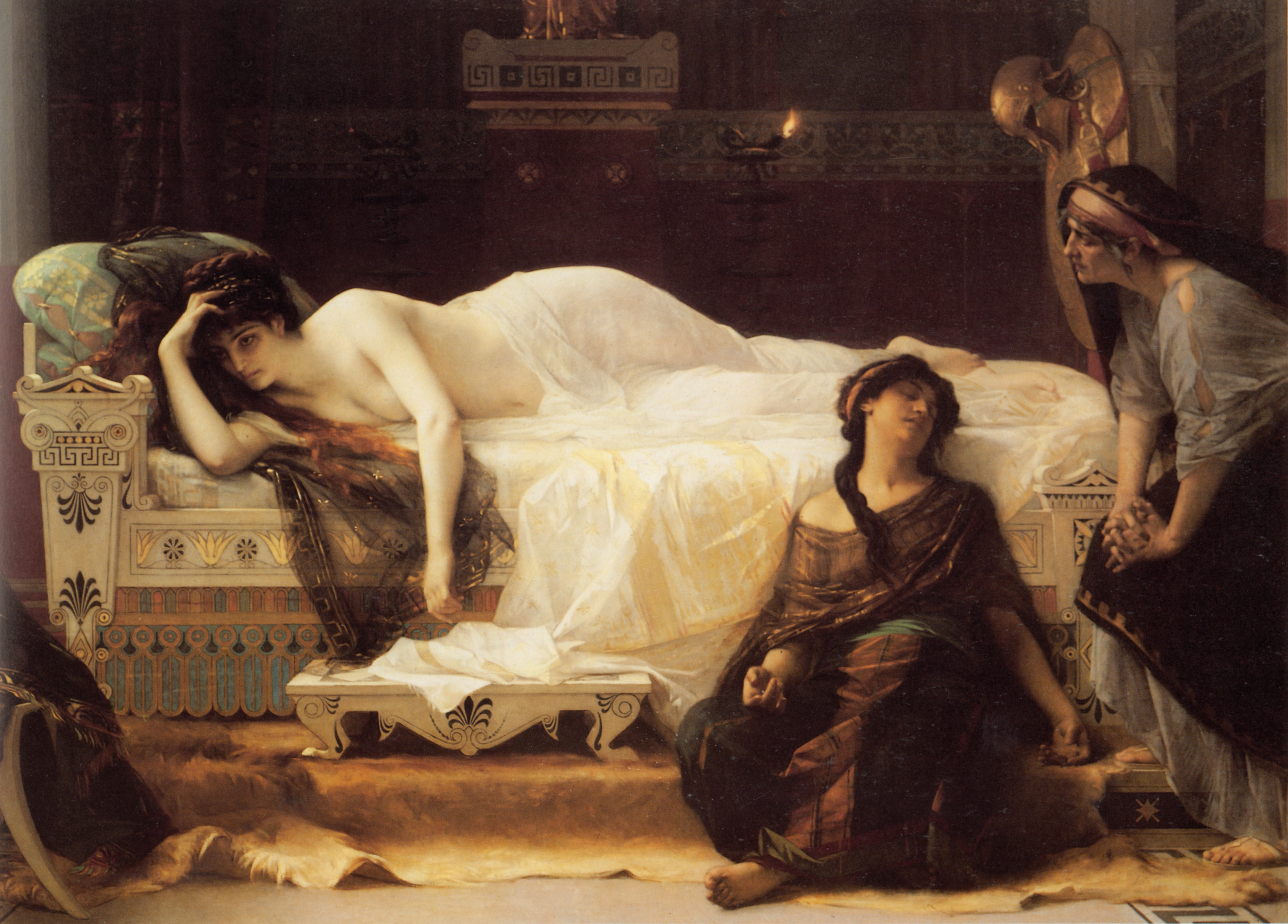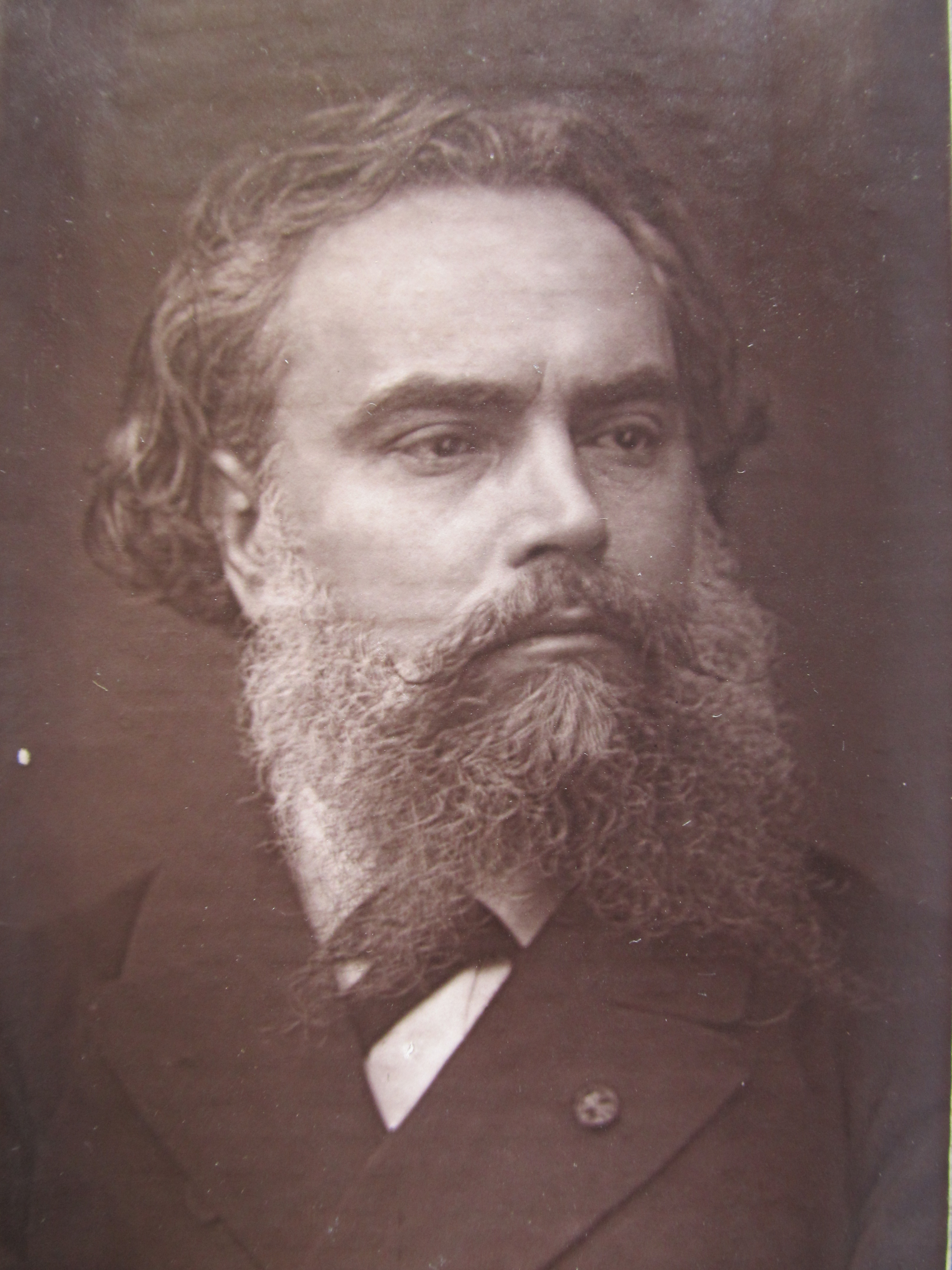Donated by Alexandre Cabanel to the museum of his birthplace, this painting is an exemplary work by the artist and strongly representative of his achievements during the period. The classical figure of Phaedra’s languid body stretches across the canvas. Nearly as white as the sheet draped over her, her body dramatically contrasts against the vivid colours of the setting. The details of the architectural features, furs, fabrics, and the servants’ costumes are all rendered sumptuously and create an atmosphere of exotic luxury. Cabanel used the wife of a prominent banker as his model. That he could represent the significant classical figure of Phaedra in this way – both frail and banal – was heavily criticised at the Salon of 1880, where the painting’s proliferation of “insignificant” details was also taken to task. Nonetheless, it was precisely the painting’s confusion of banality and excess that made it a fitting, nostalgic allegory of Second Empire society.
In Greek mythology, Phaedra was the daughter of Minos and Pasiphaë, wife of Theseus, sister of Ariadne, and the mother of Demophon of Athens and Acamas. Though married to Theseus, Phaedra fell in love with Hippolytus, Theseus's son born by either Hippolyta, queen of the Amazons, or Antiope, her sister. Euripides placed this story twice on the Athenian stage; one version survives. According to some sources, Hippolytus had spurned Aphrodite to remain a steadfast and virginal devotee of Artemis, and Aphrodite made Phaedra fall in love with him as a punishment. He rejected her. In one version, Phaedra's nurse told Hippolytus of her love, and he swore he would not reveal her as a source of information. In revenge, Phaedra wrote Theseus a letter that claimed Hippolytus raped her. Theseus believed her and cursed Hippolytus with one of the three curses he had received from Poseidon. As a result, Hippolytus's horses were frightened by a sea monster and dragged their rider to his death. Alternatively, after Phaedra told Theseus that Hippolytus had raped her, Theseus killed his son and Phaedra committed suicide out of guilt, for she had not intended Hippolytus to die. Artemis later told Theseus the truth. In a third version, Phaedra simply told Theseus this and did not kill herself; Dionysus sent a wild bull, which terrified Hippolytus's horses. This is the story!


 Alexandre Cabanel
Alexandre Cabanel